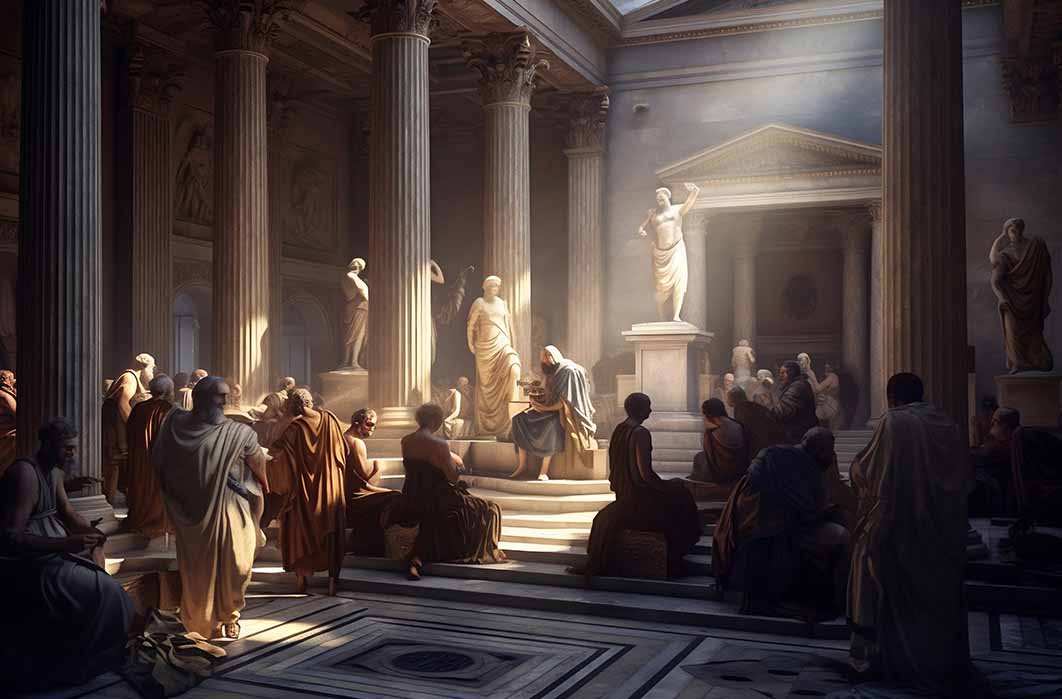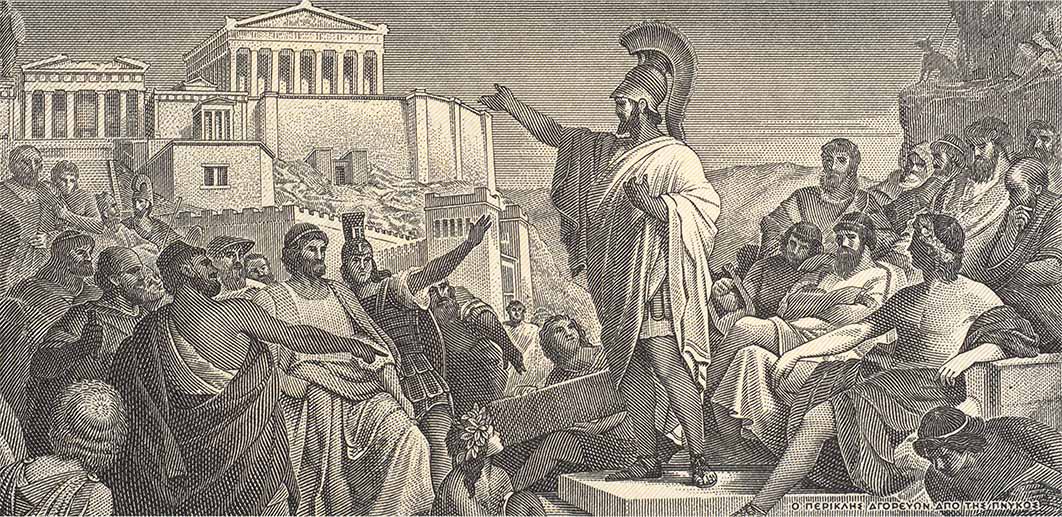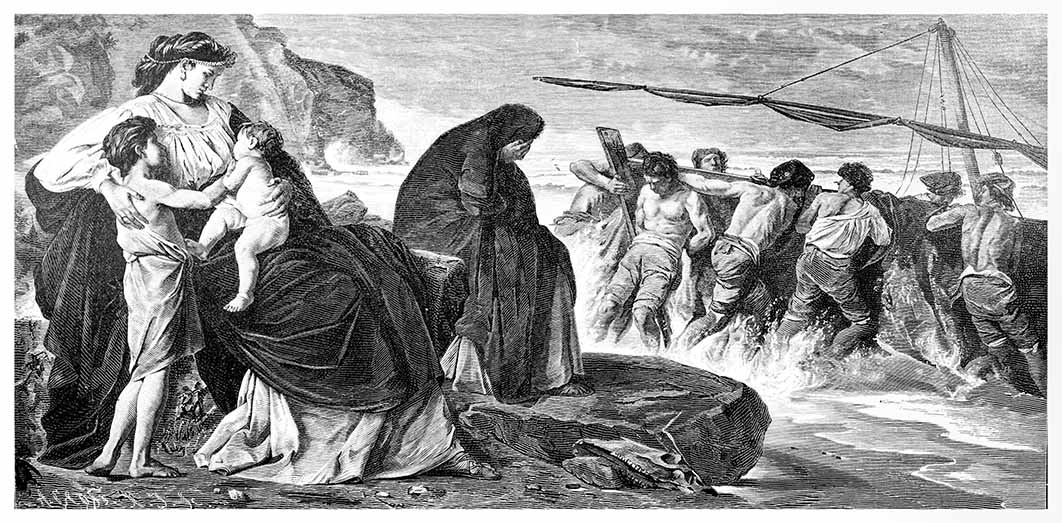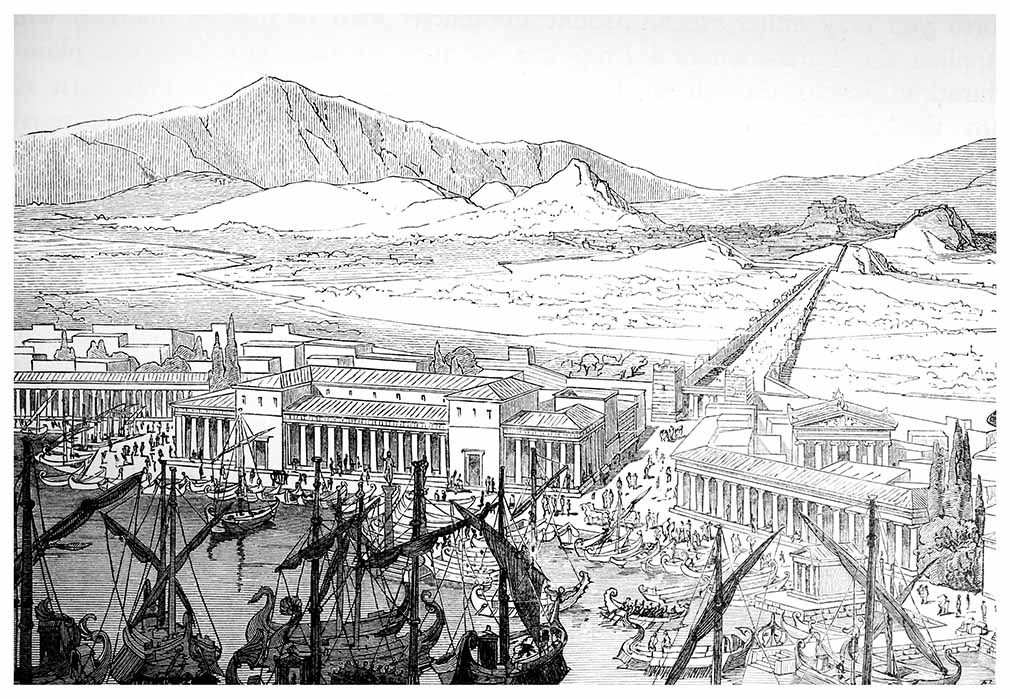
Visiting A Time Capsule Of Periclean Athens
A time-traveler considering taking a stroll through Periclean Athens has a very narrow window of time to visit Athens in its heyday. Pericles, sometimes noted as the greatest statesman of Athens, came to power in 448 BC but died of the plague in 429 BC. For a period of 50 years, Athens had time to recover from war and Pericles transformed Athens into the most spectacular city on the face of the earth. However, the Peloponnesian War, in which Athens and her allies fought against Sparta and her allies, broke out in 431 BC. So, it is advised to visit the city a year or two before it becomes obvious that the two sides are on a collision course - one that will ultimately lead to Athens’ defeat and the loss of her maritime empire.

Pericles delivering his famous Funeral Oration at the end of first year of the Peloponnesian War ( vkilikov/ Adobe Stock)
Arrival at Piraeus
It is recommend to arrive by sea, disembarking at Piraeus in the largest of its three harbors, known as Kantharos or Goblet because of its shape. Kantharos is where all the commercial shipping docks, while the two smaller harbors, Zea and Mounychia, are reserved for Athens’ huge fleet of triremes, which are housed in the surrounding ship sheds. Triremes are so called because they have three tiers of oars. They can reach nine knots an hour and virtually turn on an obol. All three ports are a positive hive of industry and activity. Many metics - permanent foreign inhabitants - have established sanctuaries to their outlandish gods in the Piraeus, swarming with hundreds of sailors, for obvious reasons. Service in the fleet is a full-time activity and provides a livelihood for the poor. Athens only became a naval power in 482 BC, two years before the Battle of Salamis against the Persians, and henceforth the rowers became essential to her survival and prosperity.
The big island just over a mile away (two kilometers) is Salamis and the battle was fought between the straits. Back in 480 BC, civilians, including Pericles as a young boy, had to evacuate to Salamis in advance of the Persian invasion of Attica, Attica being the territory surrounding Athens. Imagine Pericles standing on the shore watching his city erupting in flames and the battle raging, and knowing that if Athens lost the Persians would immediately round up all the civilians, kill all the men, and enslave all the women and children. Luckily the Athenian war heroes, Themistocles and Xanthippus – Pericles’ father – turned the tables on the Persians.

Imagine a young Pericles looking at the boats leaving them evacuated on the shore of Salamis (antiqueimages/ Adobe Stock)
It is about a five-mile walk (eight kilometers) from Piraeus to Athens, following the course of the Long Walls, which join the two urban centers together. Nobody thinks twice about walking there and back in the same day. Socrates walked down to the Piraeus in his 60s to witness a festival and was about to walk back when he bumped into some friends who persuaded him to stay over and talk about what constitutes the ideal state. The fruit of that conversation became Plato’s book Republic. When the Peloponnesian War broke out, the Spartans gained control of the countryside, but the Athenians were still able to feed themselves because they ruled the waves and essential supplies could be transported within the safety of the Long Walls.

Piraeus harbor, a hub of activity and the Long Wall leading to Athens (antiqueimages/ Adobe Stock)




